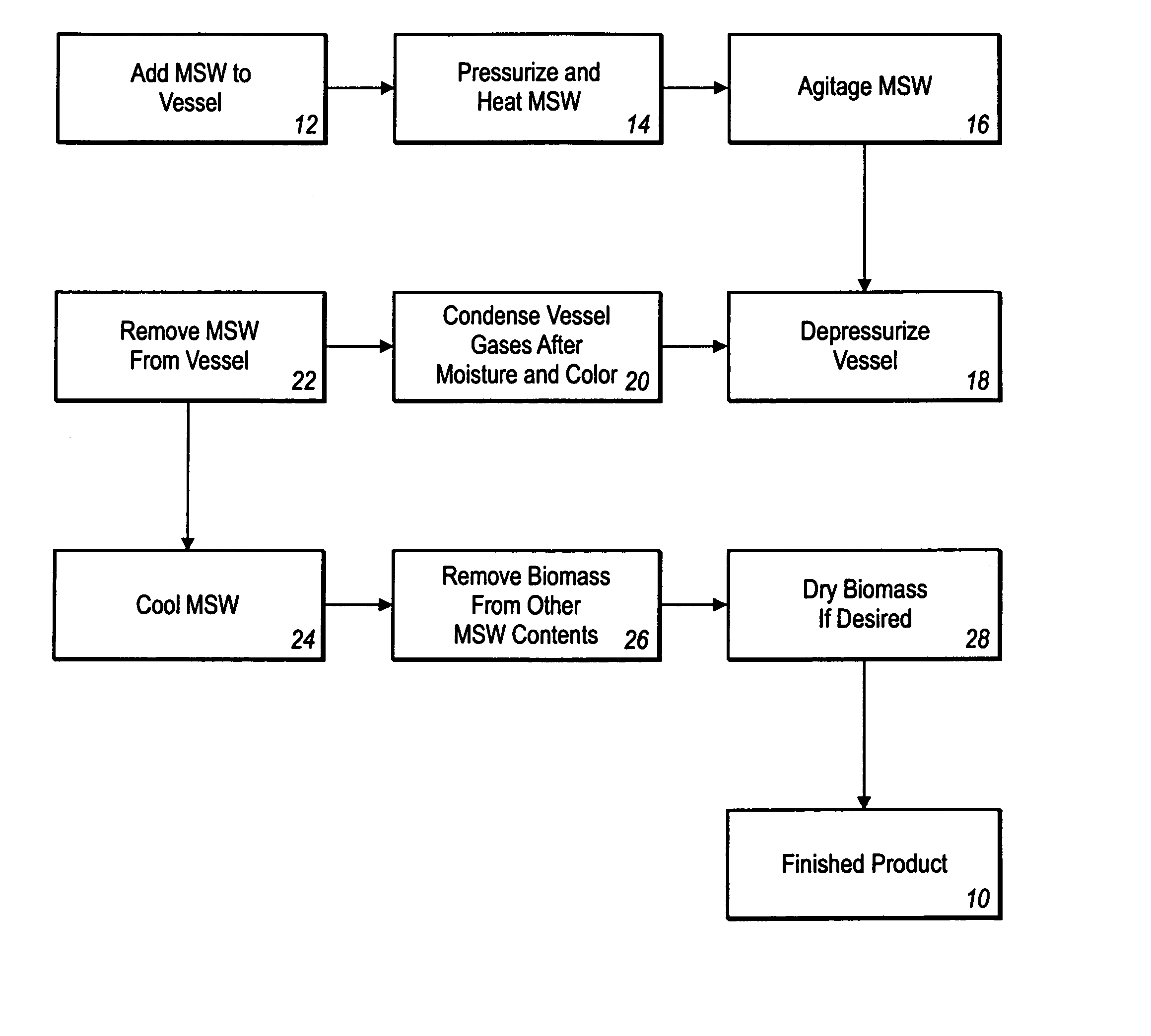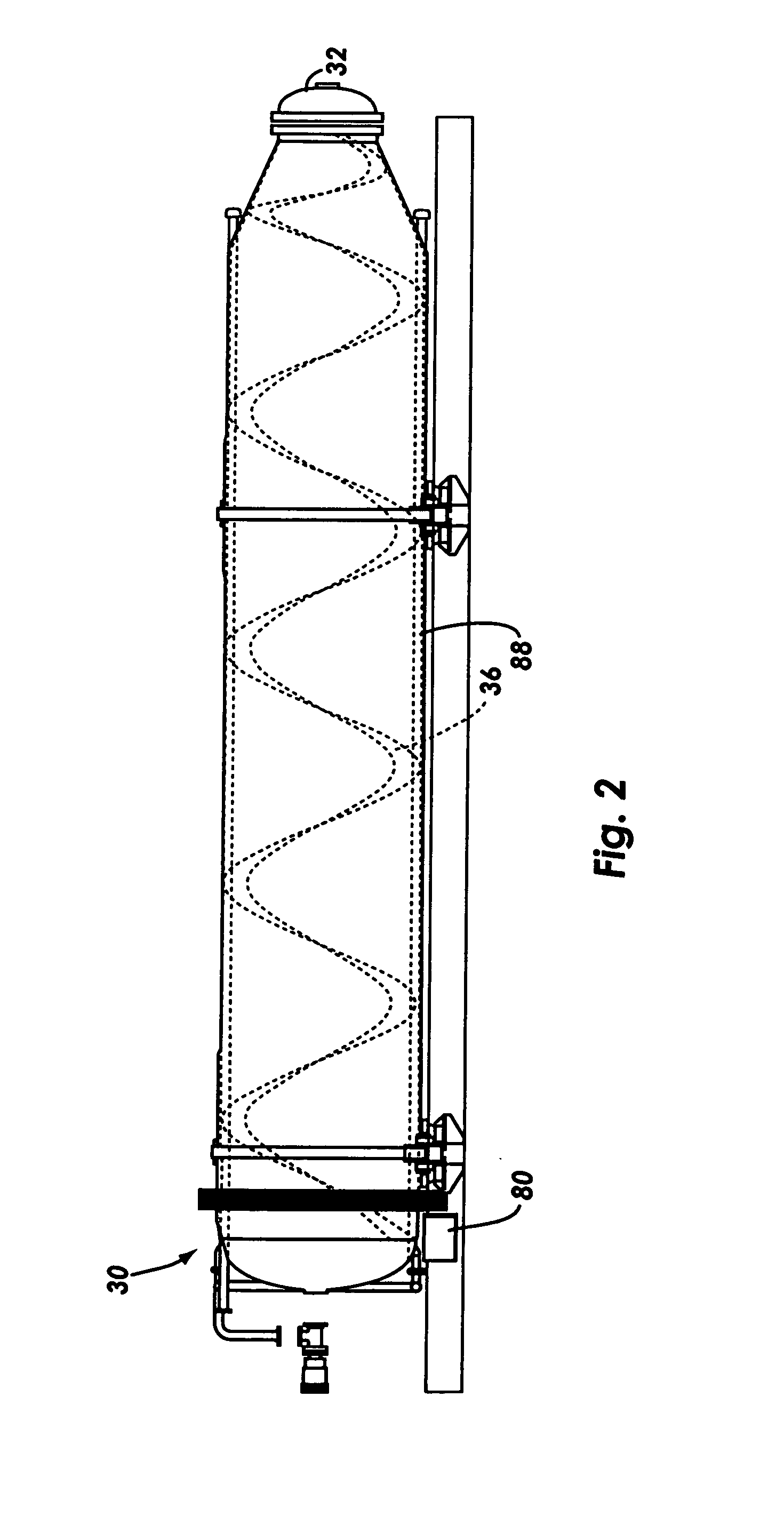Soil amendment product and method of processing
a technology of soil amendment and product, applied in the field of processing methods, can solve the problems of removing beneficial topsoil, and achieve the effects of improving oxygenation and percolation of water, less permeable, and increasing permeability
- Summary
- Abstract
- Description
- Claims
- Application Information
AI Technical Summary
Benefits of technology
Problems solved by technology
Method used
Image
Examples
Embodiment Construction
[0025] While the invention is susceptible of various modifications and alternative constructions, certain illustrated embodiments thereof have been shown in the drawings and will be described below in detail. It should be understood, however, that there is no intention to limit the invention to the specific form disclosed, but, on the contrary, the invention is to cover all modifications, alternative constructions, and equivalents falling within the spirit and scope of the invention as defined in the claims.
[0026] In 2001, 229 million tons of MSW were generated. Of that quantity, the approximate breakdown of constituents is as follows:
Paper35.7%Yard Trimmings12.2%Food Scraps11.4%Plastics11.1%Metals7.9%Rubber, leather and textiles7.1%Glass5.5%Wood5.7%Other3.4%
[0027] In order to reduce the generation of MSW, the EPA has identified several strategies. The most preferred is source reduction, followed by recycling and composting. The least desirable ways to deal with MSW is combustion...
PUM
| Property | Measurement | Unit |
|---|---|---|
| pressure | aaaaa | aaaaa |
| temperatures | aaaaa | aaaaa |
| pressure | aaaaa | aaaaa |
Abstract
Description
Claims
Application Information
 Login to View More
Login to View More - R&D
- Intellectual Property
- Life Sciences
- Materials
- Tech Scout
- Unparalleled Data Quality
- Higher Quality Content
- 60% Fewer Hallucinations
Browse by: Latest US Patents, China's latest patents, Technical Efficacy Thesaurus, Application Domain, Technology Topic, Popular Technical Reports.
© 2025 PatSnap. All rights reserved.Legal|Privacy policy|Modern Slavery Act Transparency Statement|Sitemap|About US| Contact US: help@patsnap.com



